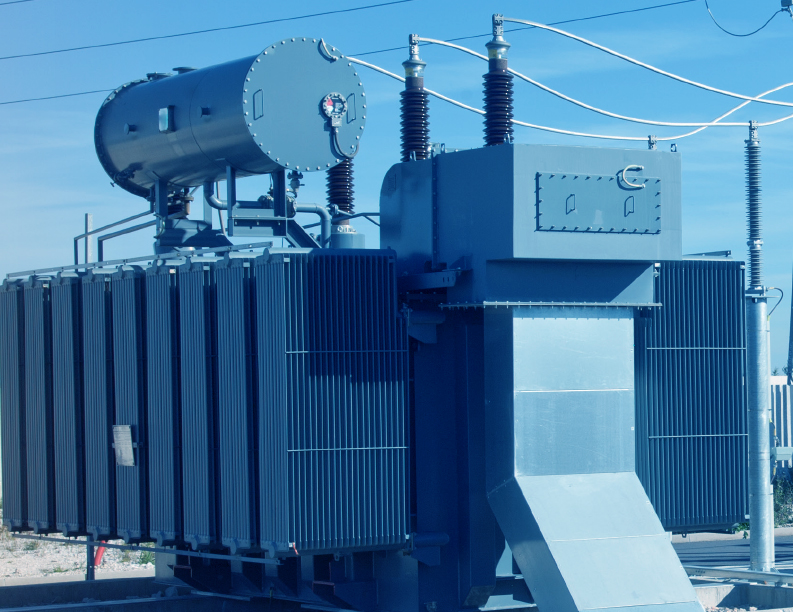Introduction:
In the ever-evolving landscape of electrical asset management, the role of temperature sensors cannot be overstated. These sensors serve as the frontline defence for electrical assets, ensuring their health and reliability. In this article, we will delve into the crucial role played by fiber optic temperature sensors within the realm of electrical asset monitoring software. We will explore how these sensors bring together precision and efficiency, catering to the diverse needs of electrical engineers, operators, facility managers, utility companies, and many others.
The Evolution of Temperature Sensors
Before we delve into the intricacies of fiber optic temperature sensors, it’s essential to understand the evolution of temperature monitoring in the electrical industry. Traditional sensors had limitations, and as the industry evolved, so did the need for more precise and efficient solutions.
The evolution of temperature sensors has been pivotal in enhancing the capabilities of electrical asset monitoring software. As technology progressed, so did the need for more advanced temperature monitoring solutions, ultimately giving rise to the integration of fiber optic temperature sensors.
Fiber optic temperature sensors, often referred to as “optic temperature sensors” in technical circles, represent a significant leap forward in the quest for real-time, high-precision temperature data. These sensors are not only immune to electromagnetic interference but also capable of functioning in extreme conditions, making them a perfect match for the demanding needs of electrical asset monitoring.
The significance of this evolution lies in the fact that it has allowed electrical engineers, facility managers, utility companies, and other stakeholders to monitor the health of their electrical assets with unprecedented accuracy. By harnessing the capabilities of fiber optic temperature sensors within electrical asset monitoring software, professionals can proactively manage and maintain critical assets, ultimately minimizing downtime and ensuring operational efficiency.
In this era of technological advancements, the evolution of temperature sensors continues, promising even more sophisticated solutions for the electrical industry. As we delve deeper into the integration of fibre optic temperature sensors with electrical asset monitoring software, we’ll uncover the multitude of advantages they offer to the diverse range of professionals and organizations invested in the health and reliability of electrical assets.
The Advantages of Fiber Optic Temperature Sensors
Fiber optic temperature sensors have emerged as a game-changer in electrical asset monitoring . These sensors offer a myriad of advantages, from real-time monitoring to high precision. They are immune to electromagnetic interference and can operate in extreme conditions, making them an ideal choice for various applications.
- High Temperature Measurement Range: Fiber optic sensors can measure temperatures from extremely low (cryogenic) to very high temperatures (up to thousands of degrees Celsius). This makes them suitable for a wide range of industrial applications.
- Intrinsically Safe: Since fiber optic sensors do not use electricity to make measurements, they are inherently safe in explosive or hazardous environments where sparks or electromagnetic interference could be dangerous.
- Immunity to Electromagnetic Interference (EMI): Fiber optic sensors are immune to EMI, which is common in environments with high-voltage equipment or strong electromagnetic fields. This makes them suitable for use in electrically noisy environments.
- Multiplexing Capability: Multiple fiber optic sensors can be connected to a single optical fiber, allowing for simultaneous measurements at different points. This makes them suitable for distributed sensing applications.
- Small Size and Low Profile: Fiber optic sensors are typically smaller and more compact than traditional electronic sensors, making them easier to install in tight spaces or integrate into existing systems.
- Lightweight: Fiber optic sensors are lightweight, which can be advantageous in applications where weight is a critical factor, such as aerospace or automotive applications.
- Resistance to Corrosion and Harsh Environments: Fiber optic sensors can be constructed with materials that are resistant to corrosion, chemicals, and harsh environments. This makes them suitable for use in industries like chemical processing, oil and gas, and aerospace.
- High Accuracy and Precision: Fiber optic sensors can provide highly accurate and precise temperature measurements, particularly in stable environments where drift and noise can be a concern for electronic sensors.
- Long Measurement Distances: Fiber optic sensors can transmit measurements over long distances without significant signal degradation. This is especially useful in applications where sensors need to be located far from the measurement equipment.
- Flexibility in Sensor Design: Fiber optic sensors can be designed in various forms, including probes, cables, and distributed sensing systems, allowing for flexibility in how and where they are deployed.
- No Electrical Interference with Sensitive Equipment: In environments where electrical interference could affect sensitive equipment, using fiber optic sensors can help avoid these issues.
- Compatibility with Harsh Environments: Fiber optic sensors are well-suited for harsh environments, such as those with extreme temperatures, high radiation levels, or high levels of electromagnetic interference.
- Minimal Maintenance Requirements: Fiber optic sensors often have fewer moving parts and are less susceptible to wear and tear compared to traditional electronic sensors, leading to lower maintenance requirements.
Overall, fiber optic temperature sensors offer a range of advantages that make them highly valuable in a variety of industrial, scientific, and research applications.
Integration with Electrical Asset Monitoring Software
One of the key reasons why fiber optic temperature sensors are gaining traction is their seamless integration with advanced electrical asset monitoring software. This integration provides a holistic view of the health of electrical assets, allowing for proactive maintenance and preventing costly downtime.
In the intricate world of electrical asset management, the seamless integration of temperature sensors with electrical asset monitoring software is a pivotal factor in ensuring the health and reliability of critical electrical assets. This synergy between technology and precision allows professionals across a spectrum of industries, including electrical engineers, facility managers, utility companies, and others, to monitor the health of their electrical assets with unparalleled efficiency and accuracy.
The integration of temperature sensors, particularly advanced fiber optic temperature sensors, with specialized electrical asset monitoring software revolutionizes the way data is collected, analyzed, and acted upon. These sensors provide real-time temperature data, allowing professionals to identify potential issues before they escalate, ultimately reducing downtime and maintenance costs.
Furthermore, this integration enables professionals to implement predictive maintenance strategies, leveraging historical data and machine learning algorithms within the software. By doing so, they can proactively address potential problems, schedule maintenance during convenient windows, and prevent critical failures.
The result is a proactive, data-driven approach to asset management, where temperature sensors serve as the frontline defense, while electrical asset monitoring software acts as the central nervous system, providing a holistic view of asset health. This powerful combination empowers professionals to make informed decisions, optimize asset performance, and ensure the longevity of their electrical assets. As we delve deeper into the intricacies of this integration, we’ll uncover how it maximizes efficiency and benefits a wide range of professionals and industries.
Applications Across Industries
Power Generation Plants:
Transformers: Monitoring the temperature of transformers is crucial to prevent overheating and potential failure. Fiber optic sensors can be embedded within transformer windings or placed on the surface to provide real-time temperature data.
Generators: Fiber optic sensors can be used to monitor the temperature of generator windings, ensuring they operate within safe limits.
Electric Grid and Substations:
Switchgear and Circuit Breakers: Monitoring the temperature of switchgear components helps identify overheating or potential failures before they occur.
Busbars and Connectors: Fiber optic sensors can be installed on busbars and connectors to monitor for hot spots that could indicate loose connections or overloading.
High Voltage Transmission Lines:
Overhead Lines: Fiber optic temperature sensors can be attached to transmission lines to monitor for any abnormal temperature rises caused by high current or other issues.
Oil and Gas Industry:
Electrical Motors and Drives: Fiber optic sensors can be used to monitor the temperature of motors and drives in pumps, compressors, and other equipment to prevent overheating and ensure optimal performance.
Submersible Electrical Systems: In subsea environments, fiber optic sensors can monitor the temperature of electrical components to prevent corrosion and ensure safe operation.
Aerospace and Aviation:
Aircraft Electrical Systems: Fiber optic sensors can monitor critical electrical components on aircraft, including generators, motors, and power distribution systems, ensuring they operate within safe temperature limits during flight.
Railways:
Electrified Rail Systems: Fiber optic temperature sensors can monitor the temperature of electrical components in railway systems, including overhead wires, transformers, and switchgear.
Data Centers:
Electrical Distribution Units (PDUs): Fiber optic sensors can monitor the temperature of PDUs to prevent overheating and potential electrical fires in data centers.
Automotive Industry:
Electric Vehicles (EVs): Fiber optic temperature sensors can be used to monitor the temperature of electrical components in EVs, including batteries, motors, and power electronics.
Industrial Automation:
Control Panels: Fiber optic sensors can monitor the temperature of electrical control panels to prevent overheating and ensure the reliable operation of automation systems.
Marine and Offshore Platforms:
Electrical Systems on Ships: Fiber optic sensors can be used to monitor electrical components on ships and offshore platforms, ensuring safe and reliable operation in corrosive marine environments.
Chemical and Petrochemical Plants:
Electrical Equipment in Hazardous Areas: Fiber optic sensors can be used to monitor the temperature of electrical equipment in potentially explosive atmospheres, providing intrinsically safe temperature measurements.
Overall, fiber optic temperature sensors play a critical role in ensuring the safe and reliable operation of electrical assets across a wide range of industries, helping to prevent failures, optimize performance, and improve overall system efficiency.
Future Trends and Innovations
As technology continues to advance, so do the capabilities of fiber optic temperature sensors. From enhanced data analytics to predictive maintenance algorithms, the future holds promising developments that will further optimize the efficiency of electrical asset monitoring software.
In the dynamic landscape of electrical asset monitoring, staying ahead of the curve is essential. As we delve into the integration of temperature sensors with cutting-edge electrical asset monitoring software, it becomes evident that the future holds exciting trends and innovations that will shape the industry.
The synergy between temperature sensors and electrical asset monitoring software has already revolutionized how professionals monitor the health of their electrical assets. Yet, this is just the beginning. As technology continues to advance, the integration of these tools is set to become even more sophisticated and powerful.
One notable trend is the evolution of data analytics. Advanced algorithms within electrical asset monitoring software are poised to provide deeper insights into asset health, allowing for more accurate predictive maintenance. Professionals, such as electrical engineers and maintenance managers, will benefit from proactive maintenance schedules based on historical data and machine learning.
Moreover, the integration of temperature sensors with Internet of Things (IoT) technology is on the horizon. This will enable remote monitoring and control of electrical assets, providing real-time data from anywhere, further enhancing efficiency and reducing the need for physical inspections.
The expansion of applications to new industries and the customization of solutions for specific niches are also anticipated trends. Temperature sensors and electrical asset monitoring software will continue to cater to diverse audiences, including government agencies, research institutions, and educational institutions, as they adapt to unique requirements.
As software developers and industry experts collaborate, we can anticipate user-friendly interfaces and seamless integration with other smart technologies, making the electrical asset condition monitoring process more intuitive and efficient.
In essence, the integration of temperature sensors with electrical asset monitoring software is an ever-evolving field, and the future promises to bring forth innovations that will redefine how we monitor, manage, and ensure the health of electrical assets. By staying abreast of these trends and innovations, professionals and organizations can remain at the forefront of asset management, optimizing performance and reliability in an increasingly connected world.
Conclusion
By leveraging fiber optic temperature sensors, industries can proactively monitor critical electrical components, preventing overheating and potential failures before they occur. This not only safeguards assets but also enhances operational reliability and extends the lifespan of equipment. Additionally, their ability to operate in explosive or hazardous environments without electrical interference adds an extra layer of safety. Their multiplexing capability, small size, and low profile make them versatile tools for monitoring electrical assets across sectors such as power generation, oil and gas, aerospace, and more.
Furthermore, the flexibility in sensor design and minimal maintenance requirements make fiber optic sensors a practical choice for a wide range of applications. From subsea environments in the oil and gas industry to high-voltage transmission lines in the electric grid, these sensors play a pivotal role in ensuring optimal performance and preventing costly downtime.
As technology continues to advance, fiber optic temperature sensors represent a pivotal advancement in the realm of industrial monitoring. Their capacity to provide real-time, accurate temperature data in even the harshest conditions empowers industries to make informed decisions, driving productivity and efficiency to new heights. In the pursuit of precision and efficiency, fiber optic temperature sensors stand as a testament to the potential of innovation in enhancing industrial operations.




